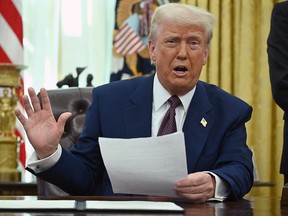While China is and continues to be the manufacturing platform of the world, concerns around its decelerating growth in 2023 have triggered panic waves across the globe. Given the deep interconnection between the global economy and the Chinese economy, there is fear among nations that global growth will further decelerate due to the troubled Chinese economy. One of the most important questions in this context becomes how to tackle the fallout. To answer this question, it is first pertinent to understand whether the problem is cyclical or structural in nature. That clarity can help avoid the fallout.
In the past, China has emerged relatively unscathed from the Asian financial crisis and the global financial crisis. It even managed to somehow stay afloat until 2023, despite the US-China trade war since 2017. This gives the impression that such crises are cyclical in nature and are inherently in the DNA of the Chinese economy. Yet a closer examination would reveal that the crisis in 2023 is very different from the ones that the Chinese economy has tackled in the past and is actually structural in nature.
At a Politburo meeting in July, China’s leaders referred to the economic recovery this year as “torturous”. What they were referring to was China’s current economic problems, which range from slowing GDP growth rates to massive unemployment, to deeply entrenched inequality, to dangerously low levels of consumption among others. The interesting point to note is that such candour is difficult to imagine from a communist party institution, let alone from such an elevated body.
Consumer prices in July were lower than a year ago, suggesting that it might be on the cusp of deflation, which reflects a chronic shortage of demand in the economy. Foreign trade in the same month showed a sharp fall in exports, owing to weak global demand, with a sharper decline in imports signifying weaknesses in demand at home. Private firms and entrepreneurs are also not spending much on investment or on hiring people. Youth unemployment has topped 21% or thrice the rate in the US. Clearly, most things currently weighing on the Chinese economy have been building up for years, even while China was wowing the world with its magical double-digit growth rates and claiming to be making strides in lifting millions out of poverty while simultaneously moving up the technology ladder.
The two prongs of Chinese economic development since Deng Xiaoping’s reforms and opening up since 1978 have been an export-led growth strategy along with investment. The reforms led to an improvement in the living standards of consumers in China, with greater buying capacity and greater demand for goods and services; investment in infrastructure, particularly in export-driven enterprises in the coastal belts of China also brought in revenues driving Chinese growth. Nevertheless, as compared to consumption levels in other countries, China’s consumption rates have been generally low. Currently, consumption – a big driver of growth indices – is even further subdued in China, especially in big-ticket items such as cars, houses, and private investment. In fact, all three segments, the backbone of the Chinese economy, fell in the first half of this year.
To drive consumption, the National Development and Reform Commission (NDRC) even came out with 12 wide-ranging measures to boost domestic consumption, which include encouraging market entities to apply domestic AI technologies to enhance the levels of electronic products, improving the innovation capability of electronic products, cultivating new growth points for consumption and so on. Clearly, something is amiss, otherwise a wide-ranging agenda for driving consumption from the NDRC would not have come up.
Consumption is tied to income. As stated previously, youth unemployment alone has topped 21%, and the government has now stated it will stop publishing data on youth unemployment. Without employment, there is no income. Without income, it is impossible to consume. But beyond consumption’s ties to income, there also are other structural reasons why consumption has been generally low while savings rates have always been extraordinarily high in China. In fact, China has an extraordinarily high savings rate at about 50% of its GDP. The reason is its desire to save for a rainy day, which in turn is driven by bad policies historically. The disastrous Great Leap Forward and Cultural Revolution driving the Chinese economy to the pits under Mao Zedong taught Chinese consumers to save and invest in land, which they can liquidate in the face of disasters like the ones Mao made the Chinese people go through.
Similarly, under Xi Jinping, the arduous three-year lockdown, during which the Chinese consumer went through drastic lows including lack of adequate food and medical care, yet again spelled out the lesson that it is better to save for a rainy day rather than to consume. Because of the hedonistic policies carried out under repressive regimes, China now has a huge local government debt problem, a real estate bubble, and huge creation of urban infrastructures accompanied by under-urbanisation – all of which indicate the desire to save rather than to spend and consume. Increasing authoritarianism under Xi has only led to a further failure of the development model which once shined bright, blinding the audience to its underlying, structural flaws.
What does this mean for neighbour India? India is an integral part of the global economy and reduced trade with China will lead to India needing a rethink of its strategies. But, beyond the fears, reduced imports into China could also be a push to actively build alternative supply chains. The top three items of import from China are broadcasting equipment, integrated circuits, and office machine parts. Collaboration between India and Taiwan has begun in related arenas and this could be a push for expanding greater economic cooperation. The top three exports from India to China are refined copper, cotton yarn, and petroleum oils. Reduced demand from China does not mean absolute doom for India, as alternate markets for these products exist, and India only needs to strengthen its strategies to develop these markets better.
In any case, Indian products that have comparative advantages in other parts of the world, like generic drugs or IT or even basmati rice, face non-tariff barriers in China. Further reduced demand from China for these segments will only spur India to explore other markets. There are also fears that falling prices of Chinese goods will increase competition and hurt foreign companies. Indian companies in China in any case are a handful, so this fear can also be ruled out. Slower economic growth in China could also benefit India, as it will reduce competition in the global energy and especially, natural gas markets. Lower prices can help to ease energy price pressures, which will be to India’s advantage.






